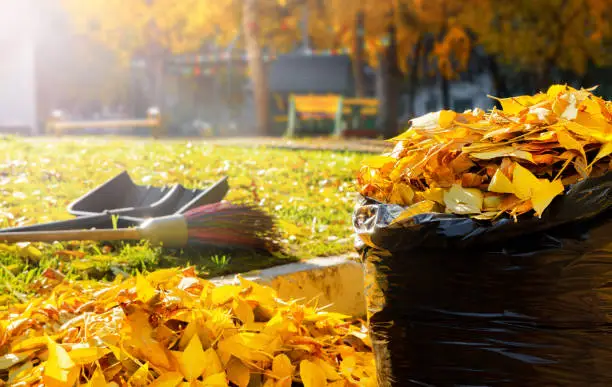Table of Contents
ToggleFall’s vibrant leaves create a stunning landscape, but they also pile up fast, demanding a cleanup strategy. Raking and yard maintenance can be more than a chore—by turning foliage into compost, you can enrich your garden sustainably while keeping your space tidy. Here’s how to tackle leaf raking and yard cleanup effectively, with eco-friendly tips and dumpster use for excess debris, ensuring a clean yard without a year-end overhaul.
Why Compost Your Leaves?
Leaves are a free resource packed with nutrients like carbon and nitrogen, ideal for compost. The EPA notes that composting yard waste can reduce landfill contributions by 20-30 percent, cutting methane emissions. A well-managed compost pile turns leaves into “black gold” for spring planting, saving $50-$100 on store-bought fertilizer.
Step-by-Step Guide to Fall Yard Cleanup
1. Gather the Right Tools
Invest in a sturdy rake and tarps for easy leaf collection. Leaf blowers work for large yards, but use electric models to reduce emissions. Wear gloves and sturdy shoes to avoid blisters or hidden debris injuries. For big jobs, rent a 10-yard dumpster to handle non-compostable waste like branches.
2. Rake Smart, Save Time
Rake on dry days to avoid heavy, soggy leaves. Work in sections, piling leaves onto tarps for easy transport. Aim for small, frequent sessions—30 minutes daily prevents strain, as overexertion causes 36,000 raking injuries annually. Mulch some leaves directly into your lawn with a mower; it’s a natural fertilizer.
3. Turn Leaves into Compost
Build a Pile: Mix leaves (carbon-rich) with grass clippings or kitchen scraps (nitrogen-rich) in a 3:1 ratio. Use a compost bin or a 3×3-foot pile in a shady spot.
Maintain It: Turn the pile weekly with a pitchfork to aerate. Keep it moist, like a wrung-out sponge. Compost is ready in 2-6 months when dark and crumbly.
Troubleshoot: If it smells, add more leaves; if slow, add nitrogen sources like coffee grounds.
Use It: Spread compost in spring for healthier beds, saving 10-20 percent on water and fertilizer.
4. Manage Excess Debris Sustainably
Not all yard waste composts—diseased plants or large branches need separate disposal. Rent a Waste Removal USA dumpster for bulky items, sorting recyclables like wood for local programs. Many municipalities offer green waste pickup; check your city’s website.
5. Prep for Next Season
Trim dead branches and clear garden beds to prevent pest habitats. Cover compost piles with tarps to protect from winter rain. Store tools in a dry shed to extend their life.
Why It Matters
Regular leaf raking and composting keep your yard functional, boost soil health, and cut landfill waste. A small roll off dumpster rental ensures non-compostable debris is handled responsibly, aligning with zero-waste goals. Start now, and your spring garden will thank you—no massive cleanup required.
Read more: The Power of Invoicing for Small Business: How to Streamline Payments and Boost Cash Flow

